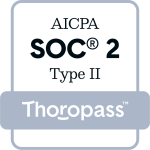We might be facing one of the most dramatic periods of call center transformation in history — COVID-19 dramatically accelerated digitalization, consumers now expect more automation and self-service, and The Great Resignation is affecting every contact center. With that in mind, modern contact centers are looking to adapt. To stay relevant and competitive in today’s modern digital landscape, these 3 capabilities are a must-have (or must-quickly-acquire) for any contact center today.
“To stay relevant and competitive in today’s modern digital landscape, these 3 capabilities are a must-have (or must-quickly-acquire) for any contact center today.”
1. Seamless Omnichannel Capabilities
Possibly the most important step to modern contact center competitiveness, omnichannel (and multichannel) capabilities represent the groundwork for almost all modern call center functions. Multichannel contact centers are equipped to handle interactions on two or more communication channels — phone, live chat, social media, email, etc. Having multiple channels available is the bare minimum in today’s marketplace.
The goal of every contact center should be seamlessomnichannel interactions— leveraging customer interaction knowledge to optimize the customer experience based on different devices customers use to interact (delivering the best mobile phone experience, landline experience, web experience etc. on the fly). On top of delivering optimized experiences based on the communication device, truly omnichannel contact centers can seamlessly pass customers between channels. That means that the look and feel between a company’s website, live chat, mobile app, and other channels all resonate together, and customer data can be passed from one to another without customer effort required. Seamless omnichannel does away with any need to repeat information. For example, anything submitted by a customer to a chat bot is passed to an agent if they switch to a live call.
2. Integrated Self-Service Automation
Automation has been emerging in the contact center industry for years, but the pandemic drastically accelerated its development and deployment. Anyone who has used a chatbot in the past has noticed the automation was a bit lackluster. Self-service solutions have been very tightly scripted in the past and have led to underperforming customer satisfaction. One typo, unexpected phrase, or even multiple requests sent at once can drive old automation off the rails and require live agent involvement — not the end-to-end self-service solution we were all looking for.
“Instead of trying to replicate and replace every live CSR interaction, today’s automated services look to solve only the call types and use cases that are primed for complete automation.”
Today’s self-service solutionstake a different approach.Instead of trying to replicate and replace every live CSR interaction, today’s automated services look to solve only the call types and use cases that are primed for complete automation. No more partial self-service requiring a customer to start with a bot and end up talking to an agent. For call types like Order Status, Claims Submission, Patient Intake, FAQs, and other routine interactions today’s self-service puts the power completely in the hands of the customer. With open API connections integrated directly to backend systems and robust self-service handling these automation-ready use cases, today’s contact centers can rely on automation to cover specific call types while CSRs use their expertise and human empathy to handle the complex interactions that have notoriously tripped up bots in the past.
3. Agent Support Systems
TheGreat Resignationis impacting every industry today, especially contact centers. To keep trained agents in house, reduce the need for new hires, and reduce pressure during seasonal hiring spikes, modern call centers are leveraging tech to support agents as well as callers. A lot of customer service automation can be initiated by callers, but some tools are designed for agents. An easily accessible, rapidly deployable knowledge management system for example is a requirement for any call center organization today. High accuracy, low time to resolution, and increased employee satisfaction require adequately equipping CSRs to handle any questions and situations they might encounter. A Knowledge Management (KM) solution essentially operates as an information repository agents can rely on as a source of truth for any information they need.
Other tools likeagent-led automationgive agents the ability to shift callers to automation for parts of a call to reduce the need for agents to handle tedious, repetitive tasks like form fills and allow them to focus on more engaging, complex calls where their empathy and expertise can bring real value. Beyond simple scripts, KM tools and agent-led automation support videos, multiple responses to questions, easy searches, and HTML/CSS and javascript additions for maximum tweaking from the expert teams crafting your repositories. These tools operate from the cloud making any updates instantly available to your agents and gives confidence to employees that the information they’re accessing is up to date all the time.
Keeping up with rapidly shifting customer expectations and the ever changing contact center marketplace can be difficult, but today’s modern call centers start with these three critical capabilities. All modern contact centers have common ground: ensure seamless omnichannel communications pass customers and information to the channel that’s best suited for that specific interaction, deeply integrated self-service solutions allow for end-to-end automation where possible, and cloud-based knowledge management solutions ensure agents are ready and prepared with the latest information if customers do end up needing to interact with a live agent. By hitting these three checkpoints, today’s call centers will enter the new, modern, marketplace on the right foot.






